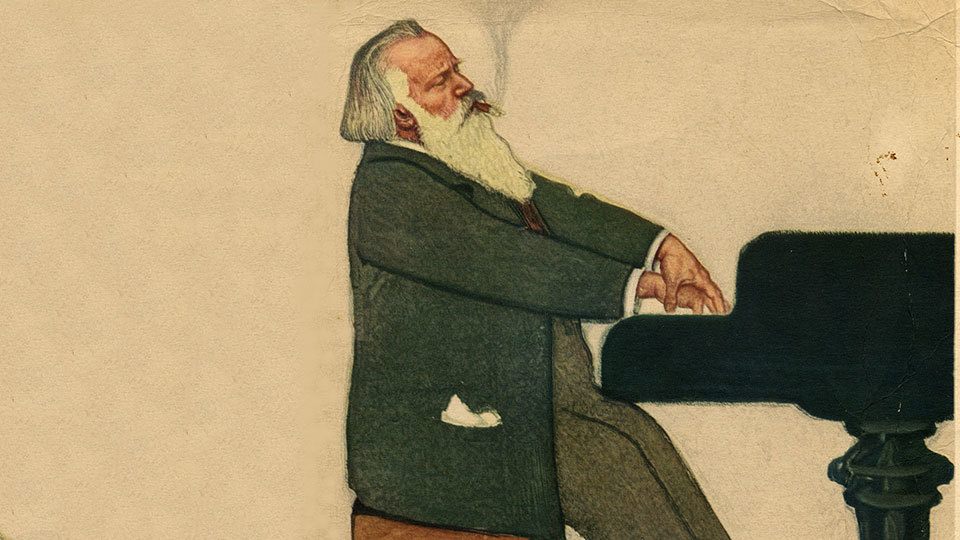Following the completion of his Piano Trio No. 2 in C Major, the often self-critical Johannes Brahms wrote to his publisher, “You have not yet had such a beautiful trio from me and very likely have not published its equal in the last ten years.”
By the time Brahms started work on the Trio in 1880, he had become a well-established, mature composer. For two years, he set the score aside to work on the Second Piano Concerto and the Third Symphony. The 49-year-old Brahms finished the Trio while on vacation at the Upper Austrian spa town of Bad Ischl during the summer of 1882. The “symphonic” nature of the Second Piano Trio mirrors these larger works.
From the passionate opening of the first movement (Allegro), the Trio unfolds as a conversation between equal and opposing forces. Frequently, the violin and cello join together in octaves to counterbalance the piano’s soaring heroism. In its first measures, the music gushes forward with expansive, seemingly unending phrases, aspirational upward leaps, and hemiolas which obscure the prevailing meter of 3/4. The movement’s four themes are related, as if springing organically from the same motivic seed. The intensity continues to rise in the development section, with a modulation a step higher to the harmonically distant key of D-flat. The remainder of the movement is a blend of development and recapitulation.
Moving to A minor, the second movement (Andante con moto) unfolds as a boldly dramatic theme and variations. Rooted in folksong, it is reminiscent of Brahms’ Hungarian Dances.
The Scherzo (Presto) which follows is set in a stormy C minor. It transforms the sparkling virtuosity of a Mendelssohn scherzo into something more ghostly. We sense the nervous, indistinguishable rustling of a dark, nocturnal forest. The Trio becomes a passionate song without words which rises to surprisingly heroic heights.
For the finale, Brahms provided the marking, Allegro giocoso (“playful”). Perhaps the movement’s distinctive opening motif was running through the mind of film composer Danny Elfman when he composed the zany theme for the television show, The Simpsons. Blending elements of sonata form with the rondo, this is music which feels simultaneously tempestuous and joyful. The high-flying coda brings the Second Piano Trio to a climactic conclusion which is both noble and celebratory.
I. Allegro:
II. Andante con moto:
III. Scherzo:
IV. Allegro giocoso:
Recordings
- Brahms: Piano Trio No. 2 in C Major, Op. 87, Maria João Pires, Augustin Dumay, Jian Wang Amazon
- Nikolai Lugansky, Leonidas Kavakos, Gautier Capuçon (2016 live performance)
- Beaux Arts Trio (1986 studio recording)

